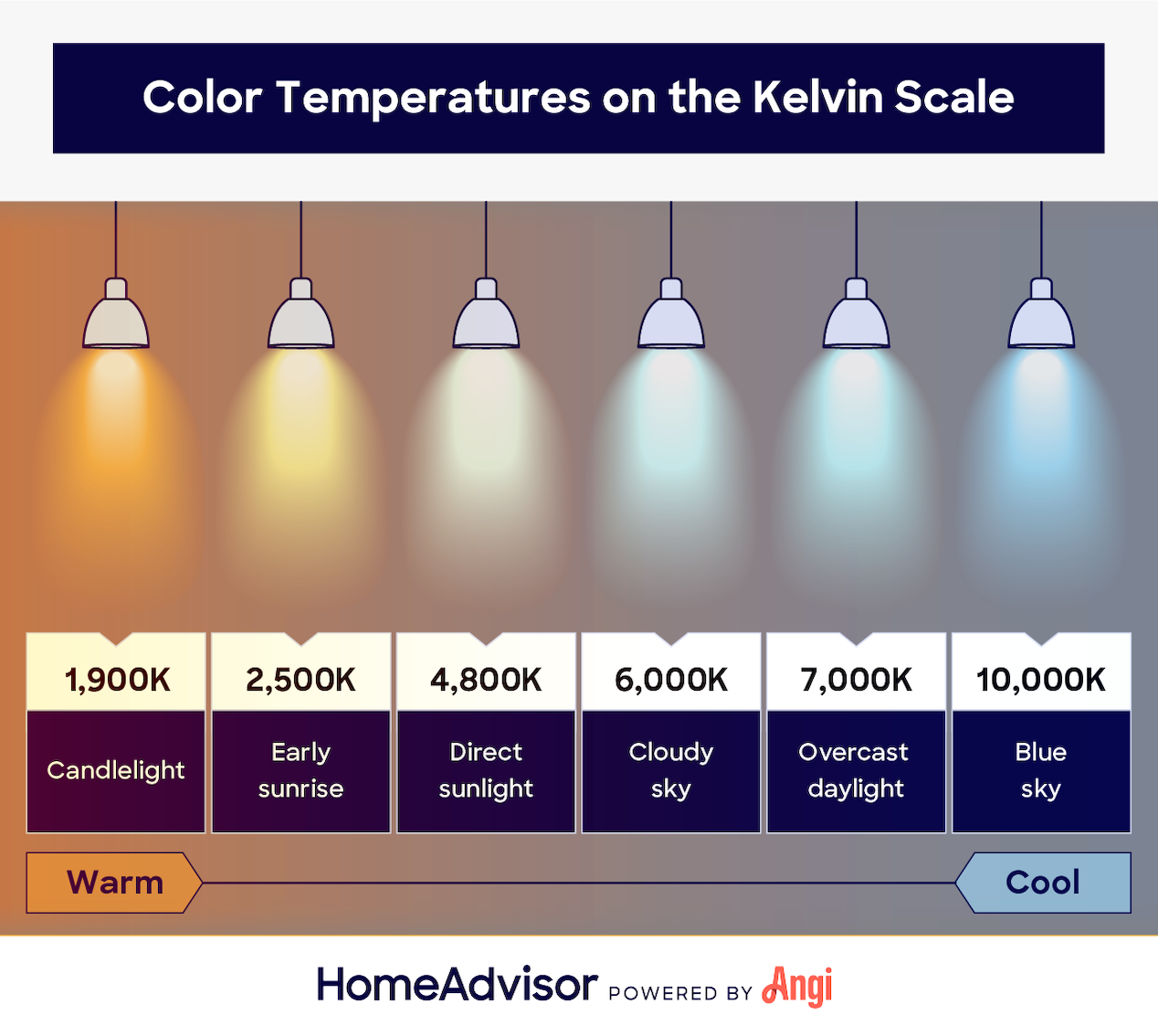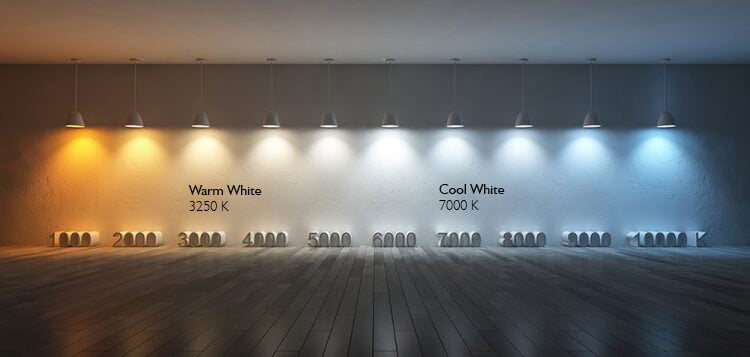Warm light typically features a color temperature below 3000K, creating a yellowish, cozy glow. Cool light has a temperature above 4000K, offering a bluish, energizing effect. The difference between warm and cool light, let’s explore
Understanding the difference between warm and cool light transforms spaces. Warm light, with its soothing amber tones, often resembles the gentle ambiance of sunrise or sunset. It’s favored in living rooms and bedrooms where a relaxing atmosphere is paramount. On the other hand, cool light mimics the crisp, invigorating quality of a bright, midday sky.
This type of illumination is ideal for kitchens, offices, or any areas where concentration and alertness are key. Selecting the correct light temperature can immensely affect the mood and functionality of any space, making this distinction crucial in both home and workplace settings. Proper lighting choice not only tailors the comfort level but also enhances the aesthetic appeal and usability of a room.
What Is Warm Light?
Imagine cosying up with your favorite book under a soft, inviting glow. That’s the essence of warm light. Understanding the difference between warm light and cool light shapes our experience in homes, workplaces, and public spaces.
Warm light is often described as a comfortable, yellowish glow reminiscent of the setting sun. It creates a relaxed and cosy atmosphere, ideal for living rooms and bedrooms where a soothing ambiance is preferred.
Color Temperature
The color temperature of light is measured in Kelvins (K). Warm light sources typically range from 2700K to 3000K. At this end of the spectrum, the light emitted is similar to the hue of a candle’s flame.
| Light Type | Color Temperature | Ideal For |
|---|---|---|
| Warm Light | 2700K-3000K | Relaxation zones like bedrooms |
| Cool Light | 3100K-4500K | Workspaces requiring focus |
Characteristics Of Warm Light
Characteristics of warm light include its ability to enhance reds and yellows, adding a sense of warmth and comfort to a space. Here are key features:
- Comforting yellow to orange hue
- Creates a welcoming and intimate environment
- Reduces contrast for a softer appearance
Now, let’s tackle some common questions about warm and cool light:
- Which light is better for eyes warm or cool? Warm light is easier on the eyes, especially at night.
- Is warm or cool light better for night light? Warm light is preferred as it does not interrupt sleep cycles.
- Is it better to read in warm light or cool light? Warm light reduces contrast and glare, making it comfortable for reading.
- What is the difference between warm light and neutral light? Warm light casts a yellowish glow while neutral light is closer to natural daylight without the warmth.

Credit: www.mintlighting.com.au
What Is Cool Light?
Understanding cool light helps decide which light is better for eyes: warm or cool? Cool light offers a different experience from warm light. It’s not just about brightness, but the shade of light too.
Color Temperature
Color temperature measures light color in Kelvin (K). Cool light has a higher Kelvin value, usually above 5000K. It looks like daylight.
| Type of Light | Color Temperature (Kelvin) |
|---|---|
| Warm Light | 2700K – 3000K |
| Neutral Light | 4000K – 4500K |
| Cool Light | 5000K and above |
This table shows the difference between warm light and neutral light. It shows how cool light sits higher on the scale.
Characteristics Of Cool Light
- Resembles natural daylight
- Enhances concentration and alertness
- Ideal for task lighting
Cool light is sharp and ideal for spaces that need focus.
Reading in cool light can be better for concentration. Is it better to read in warm light or cool light? That depends on your comfort.
For a night light, deciding between warm or cool light matters. Is warm or cool light better for night light? Warm light is preferred for its calming effect.
The Effects Of Warm And Cool Light

Credit: www.natalebuilders.com
Choosing The Right Lighting For Different Spaces
Light shapes our spaces, creating the right mood and function. Selecting between warm or cool light can transform a room. Whether boosting focus or creating a cozy ambiance, understanding the use and benefits of warm and cool lighting is key.
Exploring which light is better for eyes warm or cool? Warm light soothes, while cool light sharpens attention. Reading requires clarity, prompting the question: Is it better to read in warm light or cool light? The answer lies in personal comfort and the task at hand. Let’s dive into spaces where each lighting thrives.
Warm Light Applications
Warm light, with its soft glow, is best for unwinding. It creates a relaxing atmosphere at home. Consider the impact on evening rituals: Is warm or cool light better for night light? A warm light ensures a calm transition to sleep.
- Living rooms: Enhances comfort for family gatherings.
- Bedrooms: Gives a serene ambiance for restful sleep.
- Dining areas: Builds warm, inviting spaces for meals.
Cool Light Applications
Cool light stimulates focus and mimics daylight. In workspaces, this light improves productivity. Addressing different needs, it answers: What is the difference between warm light and neutral light? Cool light is crisp, neutral light is balanced.
- Offices: Brightens the area for increased alertness.
- Kitchens: Offers clean lighting for food preparation.
- Bathrooms: Provides clear visibility for grooming.

Credit: www.homeadvisor.com
Frequently Asked Questions On The Difference Between Warm And Cool Light
Which Is Better Warm Light Or Cool Light?
The choice between warm light and cool light depends on the intended use. Warm light suits relaxing environments, while cool light is better for focus and alertness.
Which Light Is Better For Eyes Warm Or Cool?
Warm light is generally better for the eyes compared to cool light, especially in relaxing environments or before bedtime. It reduces eye strain and promotes sleep by mimicking natural light.
Should I Use Cool Or Warm Light For Room?
Choose warm light for a relaxing, cozy atmosphere in bedrooms or living rooms. Opt for cool light for productivity and alertness in home offices and kitchens.
Is It Better To Read In Warm Or Cool Light?
Reading in warm light is often recommended for relaxation before bed, as it can promote better sleep. Cool light is better for alertness and concentration during tasks.
What Distinguishes Warm Light From Cool Light?
Warm light typically has a yellowish hue resembling natural light at sunrise or sunset, usually below 3000K. Cool light has a bluish tint and mimics daylight, often above 5000K.
Conclusion
Understanding warm and cool light is essential for creating the desired ambiance in any space. Whether it’s the cozy glow in your living room or the crisp radiance in your office, light temperature dramatically impacts mood and aesthetics. By selecting the appropriate lighting, you transform environments to match your vision.
Remember, the right light sets the right mood. Choose wisely for a harmonious balance between comfort and productivity.










